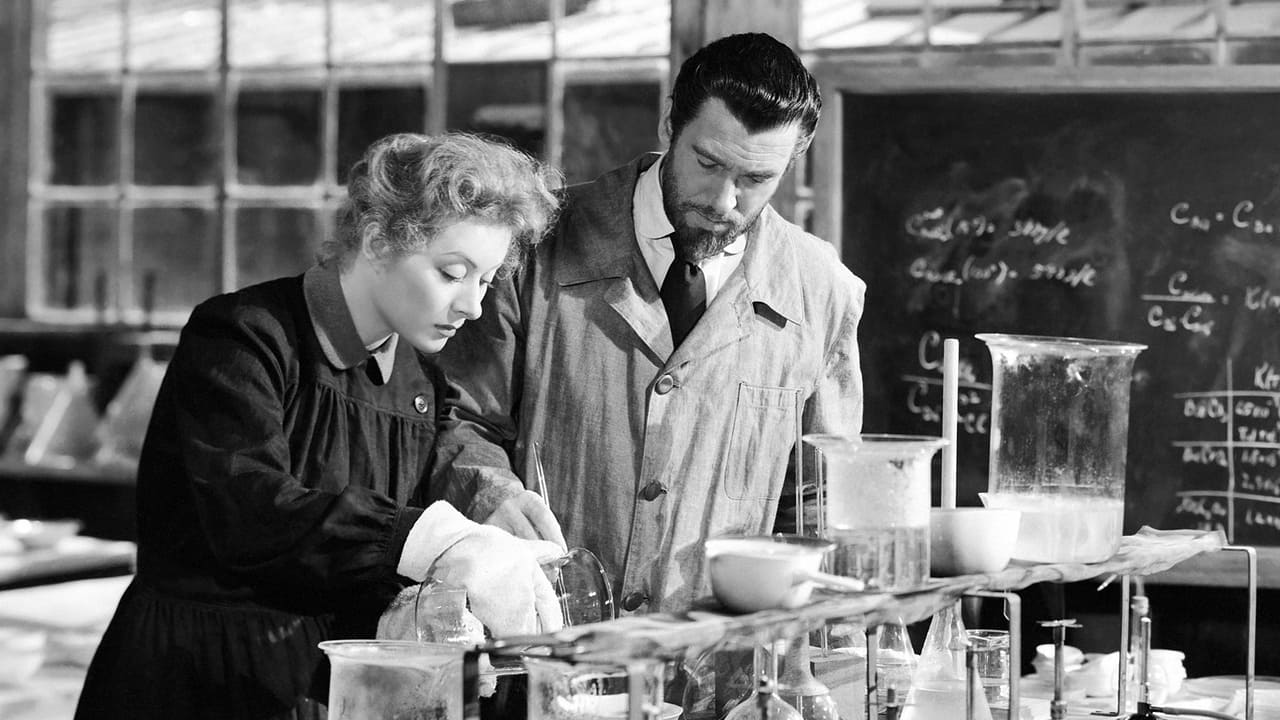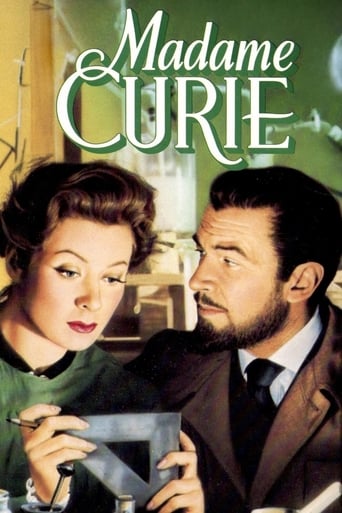

if you love science and bio's and appreciate a solid marriage. If ever a film was able to put these together as well as here. If you like a quite movie on a gray day, this is it. no remake please. Men should take a lesson here on how to treat a lady. A good hearten sentimentalist will tear and find no shame in it. film has dedication & compassion. con's - it stretches a little but i didn't mind.
... View MoreAt first, "Madame Curie" left me bored and unentertained. However, as the film goes on it gets far better and enjoyable. There's some great performances scattered throughout the film, especially by the two leads, the great Greer Garson and Walter Pidgeon. I found their love story to be charming, emotional, and romantic and I enjoyed both of their characters.I also enjoyed the scientific aspect of the film. Because this film is based on the true story of Marie Curie, the scientist who, along with her husband, discovered the element radium and won the noble prize for doing so,there's quite a bit of scientific discussion that I found to be pretty fascinating. It's not often that classic romantic dramas contain a scientific angle.The film is also very well directed by master filmmaker Mervyn LeRoy, and it is overall recommended for fans of classic cinema and science history.
... View MoreYou do not change a winning team:so they took Mr and Mrs Minniver to portray Pierre Curie et Madame Curie.The movie got chilly reviews in France ,some critics going as far as to write Mrs Garson was not well cast as Madame Curie and that the movie was boring and languid.I'm French and I do not agree with them. Even if Greer Garson does not resemble Marie Curie ,she is very convincing as the scientist ;only a small part of her life was filmed ;the movie stops with Pierre's tragic death :her second Nobel prize ,her role during WW1 ,her daughter Irene who became a great scientist too,all this is passed over in silence.After Pierre 's death,Marie had a love affair with a married man,which did not fit well into the picture of the absolutely perfect woman the screen writers wanted to show to the world.Male chauvinism,which was rampant at the time,did not spare Marie either.This is minor quibble:the movie is good,sometimes excellent,mainly in the scenes depicting the long research in an icy ware-house.People interested in Marie Curie should try and watch "Une Femme Honorable" ,a MTV work starring Marie -Christine Barrault ,a miniseries which covers the whole life of Madame Curie.
... View MoreFaithful rendition of the tale involving physicists Marie and Pierre Curie.Fresh out of their "Mrs. Miniver" roles, Walter Pidgeon and Greer Garson again etched unforgettable characters. Pidgeon here is even better here then as Clem Miniver. In this film, he shows a frigidness, never depicted by him before in films. He appears afraid and incapable of any human relationship. How the two find their way to love is an inspiration to us all.The early part dealing with the separation of radium from barium was tedious at best. Not one to be a science scholar, this is some ways reminded me of a horrible chemistry teacher that I had in high school. She too was frigid and very incapable of forming lasting relationships.Fine support is offered from Albert Basserman and Henry Travers, the latter being memorable in "Mrs. Miniver" as well. Dame May Witty briefly appears as Pidgeon's devoted mother. The resurfacing of Garson, Pidgeon, Travers and Witty was like a reunion of the Miniver characters.Garson really pours on the acting as the film develops. She is devoted to her experiments in physics but shows memorable emotion with the tragic death of Pierre Curie.
... View More